Welcome to the S. Sutton & Associates Inc. Philanthropy Wired, August 2019 newsletter!
S. Sutton & Associates Inc. brings decades of experience to all aspects of your humanitarian initiatives, providing the best possible strategies and approaches to help you realize your philanthropic potential. We’re delighted to share our Client success stories, Associate profiles, and exciting announcements and updates that spotlight our services and highlight informative news and trends from the nonprofit and philanthropic sectors across the globe.
Joining our newsletter community keeps you connected with S. Sutton & Associates Inc. and our suite of services which include:
— Advancement Services
— Alumni Relations and Giving
— Annual Giving and Direct Marketing
— Board Training, Management and Governance
— Corporate Social Responsibility
— Counsel and Support for Philanthropists
— Data Analytics
— Development Program Review and Expansion Strategies
— Donor and Constituent Engagement
— Fundraising Campaigns and Strategic Planning
— Interim Program Management
— International Fundraising
— Major and Principal Gifts
— Planned and Legacy Gifts
— Project Management
— Risk Management and Fundraising Governance
Whether you need help with planning a fundraising campaign, engaging donors and constituents, or managing multiple projects, we can get you there.
For Clients, we assemble the right customized Innovation Team of experts to support you from start to finish.
We would also love to hear from you! Get in touch and let’s see how we can work together to realize your philanthropic potential.

The Vanguards of Philanthropy:
Women’s Influence on the Third Sector
Two months ago, Vancouver hosted the triennial Women Deliver conference, the world’s largest gathering of advocates for the advancement and empowerment of women and girls. Among the 6000+ attendees from different countries and industries, philanthropic organizations were well represented.
Robust third sector involvement in the movement to advance gender equality is not surprising, given the modern history of women and philanthropy in North America. Prior to the Second World War, women’s professional aspirations were largely restricted by strictly defined gender roles. However, many considered philanthropic work to be an appropriate field of service for women – especially those that were married or affluent – because it was not seen to challenge traditional notions of women as compassionate or compliant.
Recent research, however, has contradicted this image, revealing that some women were able to push the boundaries of “respectable” female behavior by volunteering their time and resources. This was especially true of those who traveled to the frontlines of conflicts or insurrections to deliver relief, or for wealthy, ambitious women like Anne Morgan or Mabel Boardman who were able to carve out executive careers in the philanthropic sector.
With the exponential growth of North America’s nonprofit sector over the last century in response to international conflicts, natural disasters, and the human rights movement, women have become a more consistent, visible, and powerful presence at all levels of the philanthropic enterprise.
Today, women remain vital to the success of the philanthropic sector as donors, volunteers, and employees. American and Canadian women have been driving entrepreneurship and steadily increasing their share of financial wealth. This is particularly significant for the third sector because women are more likely than men to donate funds to philanthropies that support poverty reduction, health care, children and women’s rights, education, animal welfare, and the arts. Moreover, when it comes to volunteering, North American women are almost twice as likely to volunteer their time and services than men (approximately 13.7 million women volunteer compared to 6.9 million men).
These and other trends point towards the substantial role women have played and will continue to play in the functioning of the philanthropic ecosystem. Nonprofit organizations would be wise to focus on policies, strategies, and agendas that resonate with women on both ends of the donor-grantee spectrum.
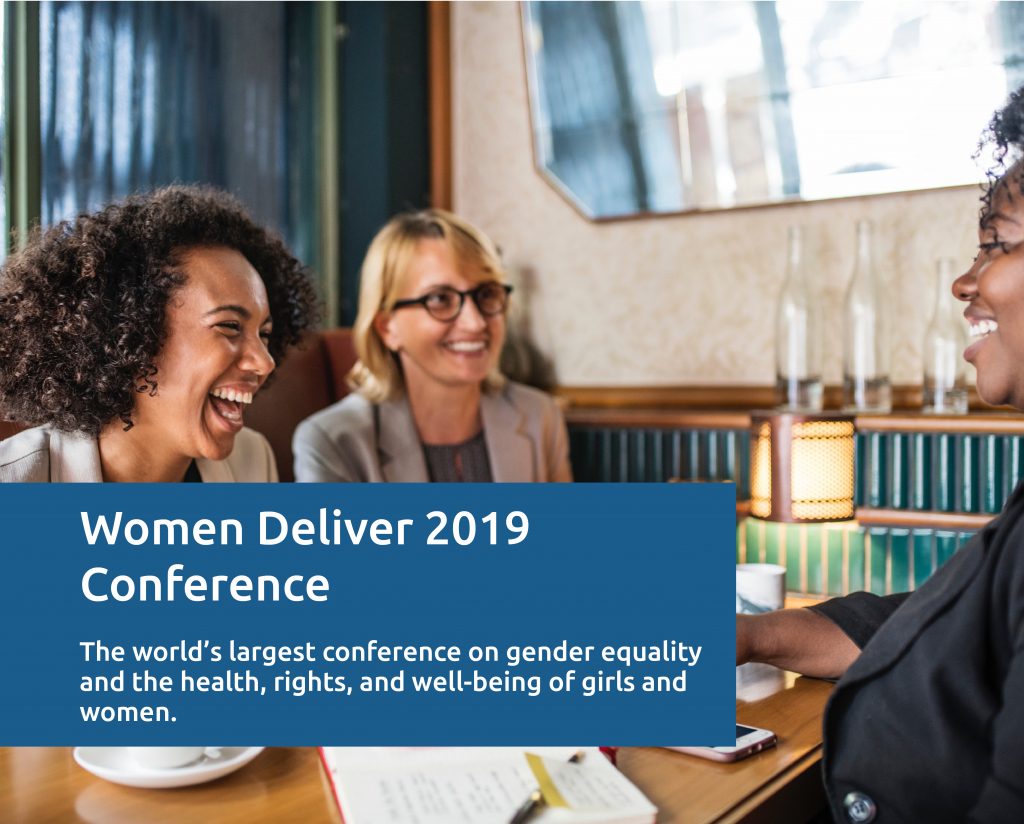

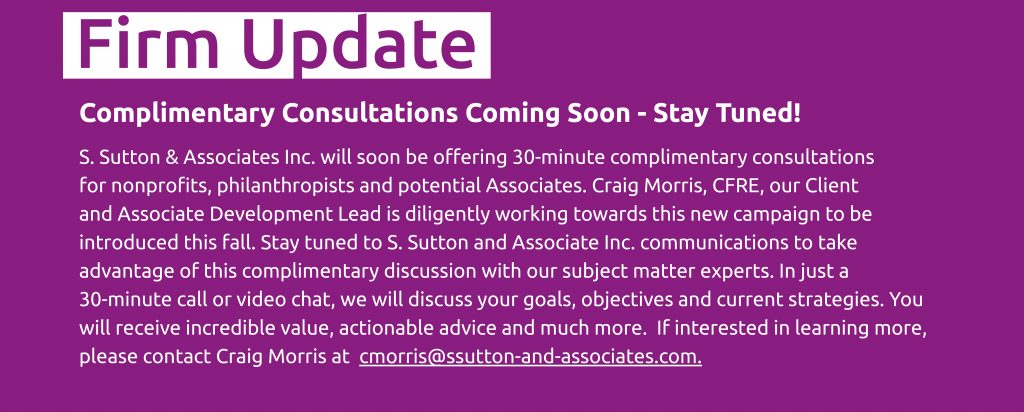


— In the global philanthropic arena, women comprise an enormous force. The United States of America has observed a shift in the control of the nation’s personal wealth since the past decade. Women manage more than half of all of the wealth ($14 trillion), and these numbers are expected to increase in the future.
— Women are exercising leadership in large-scale donations as they leverage their philanthropic influence through collaborative networks that play a part in deepening their impact. Women Moving Millions, a global philanthropic community of people committed to large-scale investment in girls and women, released a study in 2014 stating that by 2030 women will be in charge of an estimated $33.5 trillion in the U.S., and their charitable giving could accelerate to $569.5 billion annually.
This is crucial for fundraising, as research has revealed that women are twice more likely than men to describe giving to charity as among the most satisfying element of having wealth.
— In Canada, a key focus for philanthropy is indigenous youth and education. And, Indigenous youth are leading the way through organizations such as the Canadian Roots Exchange. Indspire, also established and driven by the Indigenous community, focuses on Indigenous education, essential as Indigenous youth are among the fastest-growing demographic in Canada.Both organizations present donors opportunity for targeted philanthropy, strong partnerships and investment in short-term and long-term goals to impact this cohort, critical to the future of Canada.

— The 2019 Global Trends in Giving Report highlighted that 32% of donors are most influenced to give by social media with Facebook (53%) having the most significant impact, followed by Twitter (21%) and then Instagram (16%). The European Fundraising Association shared a recent report from Salesforce indicating that more than nine out of ten nonprofit leaders were using social media in their fundraising efforts. The study also found that three-quarters of them are using digital avenues to raise awareness of their brand or cause, while 59% also use it to engage with their community, and 57% fundraise. In addition, nearly half (47%) use it to showcase impact. Amidst a generational phenomenon, a significant amount of wealth in Europe is being transferred from an aging population to a younger one.
This shift has, in part, inspired a change in the focus of organizations from simply making money to demonstrating how that money creates a positive impact. This is a direct response to the younger generation’s key focus on impact and sustainability.
— In today’s entrepreneurial society, there is a real desire for strategic philanthropy. James Magowan, a specialist in foundation philanthropy across Europe, shared the deep roots that giving to secular causes has in the U.K versus religious giving in continental Europe, specifically in Spain and France in an interview. Central and Eastern Europe differ from each other In that giving focuses more on corporate and local foundations, alongside other forms of formal and informal donor engagement.

— The 2018 Global Trends in Giving report revealed that 32% of donors in Africa prefer to give cash and in person, which is the highest in any region. Because organizations focused on charity in Africa have limited access to traditional online fundraising technology, three-quarters of people in South Africa engage in cash donations in person. However, as the sector grows, and technology evolves, Africa is moving towards online and mobile giving.
— Strive Masiyiwa, Zimbabwe’s wealthiest man has established a $100 million fund to support rural entrepreneurs in Zimbabwe. In a press statement, he expressed his pursuit for philanthropists to join him to expand entrepreneurship across Africa. Instead of outright gifts, his model provides loans ranging from $1,000 to $10,000. Before receiving a loan, prospective entrepreneurs will undergo educational training in a variety of topics.

— Donors in Asia give via digital communication channels, primarily because of rapid advancement in technology resulting in a platform for the donor community. China is home to the world’s largest number of internet users and the fastest emerging e-commerce market. Increased access to technology has boosted online donations.
— The AI You Foundation is the country’s most prominent platform to promote venture philanthropy and impact investments and has won the China Charity Award twice. Some other popular platforms in the field include Tencent Online Donation platform and Sina Micro- Philanthropy.

— The United Arab Emirates (UAE) is emerging as a dominant force in the global philanthropic space. The Harvard Kennedy School reports that this rapid increase is driven by various factors beyond simply the growth in wealth. It also reflects cultural and religious beliefs pertaining to charity. Foundation donors influence how funds are invested and subsequently, distributed, often in a Sharia (Islamic Law) compliant manner. Strong leadership from ruling families, who use philanthropy as a means of establishing leadership in the realm; and tremendous economic growth play a part in giving as well.
— Because of Boston Consulting Group’s estimation of the growth of personal wealth of $590 billion by 2022, the number of millionaires in the UAE by 2023 will likely increase to approximately 61,292. With a rapid acceleration in prosperity, charitable giving is gaining traction. However, concerns are surrounding the legal and policy environment for private philanthropy.
— There is confusion in the UAE on how to legally fundraise and donate to charity. Government authorities and fundraisers say strict laws are necessary to make sure the money is going to the right place. Consequently, UAE has introduced a guide on how to donate legally in the country.

— In India, people would be more likely to give if they understood how their money is being used, saw an increase in transparency from within the nonprofit sector and had more disposable income.
Young people between the ages of 25-34 are more likely than any other demographics to give towards a specific cause for which they feel passionate about (34% vs. 28% average). They would also prefer having access to improved methods of giving (26% vs. 20% average).

— Guyana Páez-Acosta’s report for the Worldwide Initiatives for Grantmakers Support (WINGS), describe contributions of philanthropy in Latin America and the Caribbean focusing on the following areas: human rights (overcoming gruesome labor conditions, violence, racial and minorities exclusion) and social development, good governance, transparency and accountability. However, there are challenges for philanthropists to understand how and to whom to give, since social funds and community foundations are the sole organizations that connect donors to the community.
Lack of trust between the government and these organizations has also limited their effectiveness. While this is concerning for the organizations themselves, it also poses a threat to other philanthropic organizations.
Sharing of information and knowledge, robust connections with other International Human Rights Organizations and/or access to qualified legal assistance are critical to the success of the philanthropic sector overall. These priorities give focus to the sector and to donors who seek to address these critical systemic issues.
—According to a Charities Foundation Aid report in Brazil, three-quarters among the participant sample surveyed (76%) stated that charities have an overall positive impact internationally. The Brazilian society aged between 18-24 are more likely than average to perceive a positive impact from charities based in Brazil. They are also much more likely to describe the positive impact internationally (82%) and within their local community.

—The 2018 Global Trends in Giving reportindicated that 31% of donors are inspired to give by social media in the region. Simultaneously, Facebook released fundraising tools in Australia, which include the key features such as 100% fee-free donations and the ability to add a donate button to live videos when streaming on Facebook.
— As per the 2019 Australian Communities Trends report, Australian givers are “need responders” meaning that they give when they are informed about a cause that demonstrates a definite need.
Among those surveyed, 40% are likely to give when they hear about a particular need-based issue and give directly rather than to those causes which focus primarily on raising awareness. Additionally, 61% are most likely to support local/national issues.
Older Australians prefer to support traditional charities over social enterprises, while the younger generation sees value in both types of organizations since both reflect passion.

Fundraising Campaigns and Strategic Planning:
Learning the Lexicon Leading to Success
Fundraising campaigns are a powerful driver to address institutional needs, enlist and engage the support of constituencies and elevate philanthropic performance. Planning and preparing for a campaign is just as important as its execution, because it can determine short-term and long-term success. Elements of planning a successful campaign include:
— Strategic planning for a campaign often incorporates needs assessment and priority setting, developing the case for support, campaign branding and marketing, evaluation of the existing donor pipeline, training gift officers and development staff, and executive coaching for volunteer and staff leaders.
— Feasibility studies or readiness assessments gauge both internal and external readiness. Internal readiness is assessed in terms of staffing, campaign structure, donor pipeline, processes and funding priorities articulated in the case for support. In other words, how can your operations be improved to increase your fundraising effectiveness?
— External readiness evaluates your constituents’ opinions, attitudes and engagement, which is essential to developing a roadmap for your campaign’s success.
S. Sutton & Associates Inc. can assist your organization with all facets of strategic planning, preparation, and execution, as well as, pre- and post-campaign assessment. Based on both internal and external readiness, our Innovation Team makes evidence-based recommendations for ambitious yet achievable campaign goals. We evaluate the likelihood of both philanthropic and volunteer support for your proposed campaign, enthusiasm for the strategic goals of the campaign, and confidence in your institution, its leadership, and its fundraising programs to achieve the mission and impact of your organization.
Contact us to learn more about how our services can help you raise more money, more efficiently.
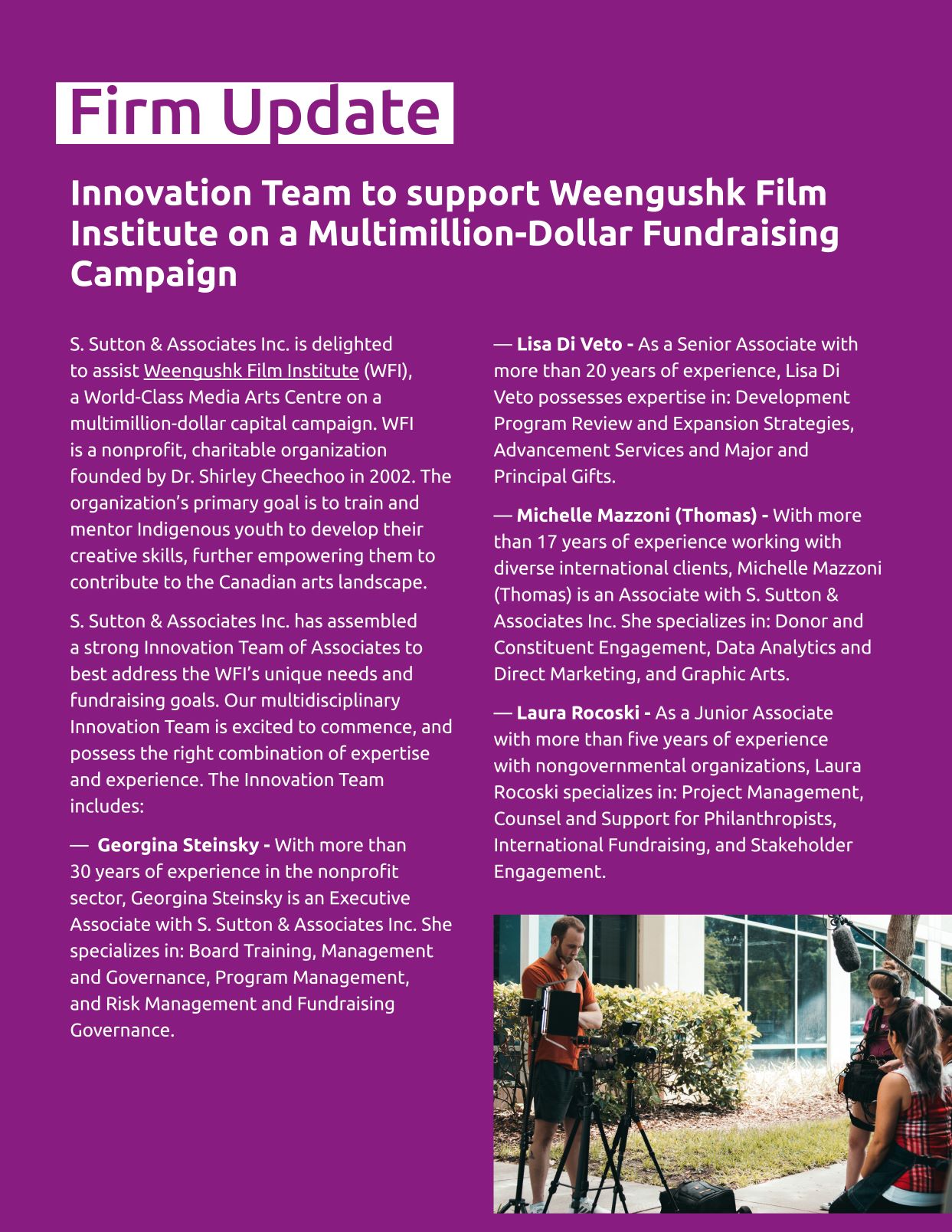
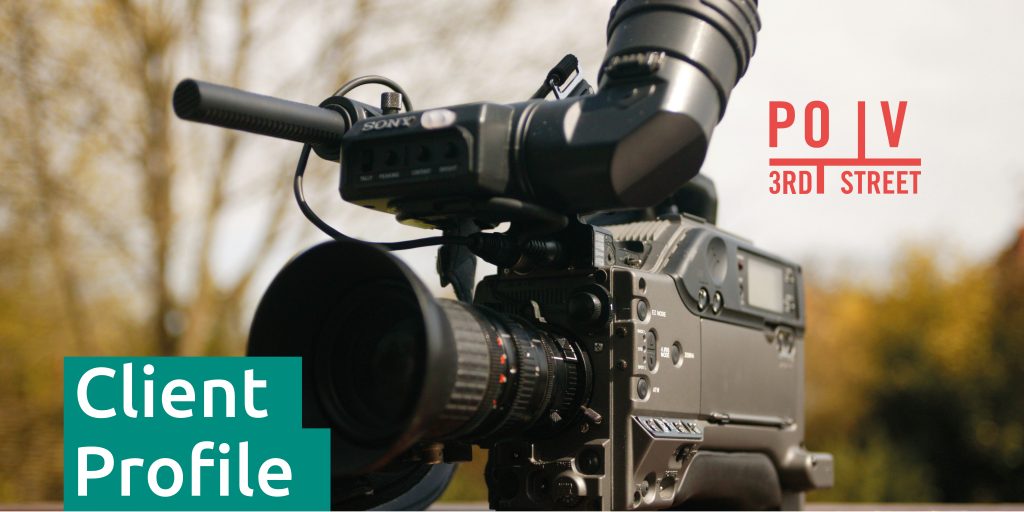
POV 3rd Street
In 2007, members of the film, TV and commercial production industries established POV as a result of an interest in increasing access for at-risk youth (18 to 29) to gain employment in the media industry and broaden its diversity. POV is dedicated to educating, connecting and supporting young people from traditionally underrepresented communities and nurturing their talent and creative passion into possible careers in the TV and film production industry.
In 2012, POV ran twelve modules in partnership with 3rd Street, forming POV 3rd Street. This collaboration proved very successful and led to the development of a combined training program that not only equips students with valuable technical skills but also imparts critical thinking and soft skills. POV 3rd Street runs several different programs for students and alumni, including the Media Training Program, the 3rd Street (Critical Thinking) Program, and the Next Steps Program.
POV 3rd Street has an impressive student graduation rate of 87%, and 62% of their alumni are working in the film and media industry as a direct result of their participation in POV 3rd Street. Another 13% are working in related fields.
To achieve POV 3rd Street’s ambitious plans, S. Sutton & Associates Inc. developed a Three-Year Strategic Plan with five goals and a step by step workplan. Subsequently, the firm developed a Fundraising Plan with three strategic fundraising priorities, focused on systems and processes, recruitment, training, mentoring the right team, and growing the donor base.
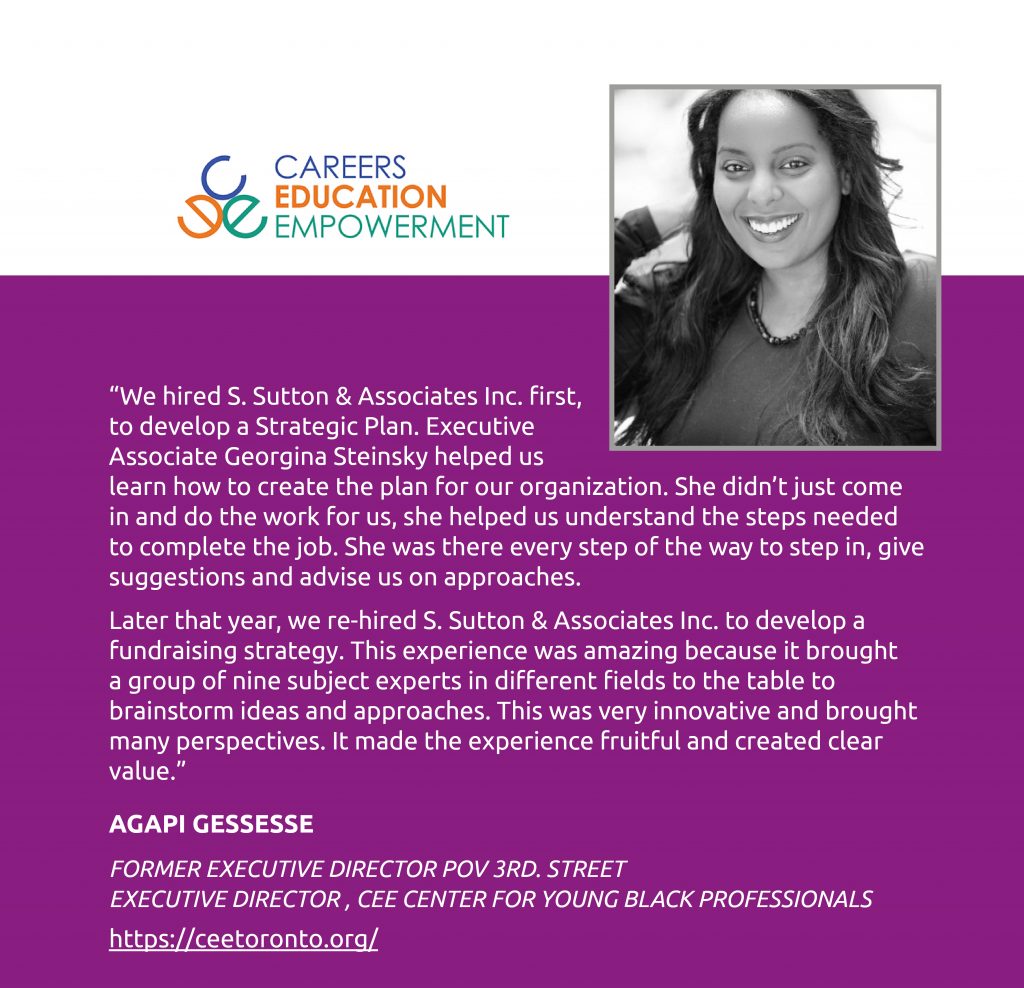

 420-737-921-492
420-737-921-492 410-245-0398
410-245-0398 647-969-8866
647-969-8866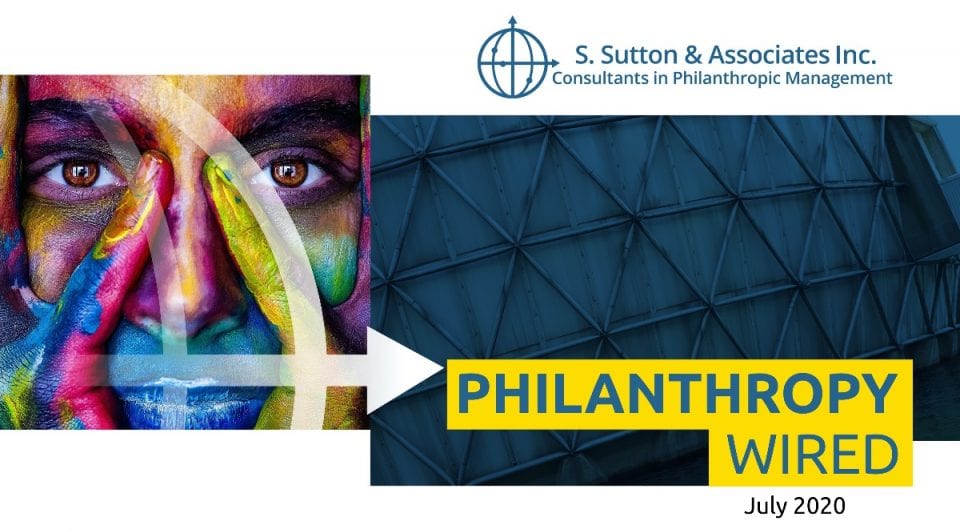




 www.SSutton-and-Associates.com
www.SSutton-and-Associates.com